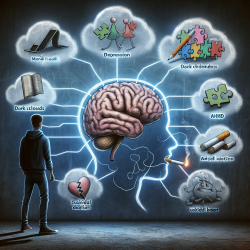Introduction
Physical activity (PA) during adolescence is crucial for maintaining a healthy lifestyle and preventing chronic diseases. However, a significant decline in PA is observed during these formative years. A recent study titled Maintenance and decline of physical activity during adolescence: insights from a qualitative study explores the factors influencing this trend. This blog will delve into the study's findings and discuss how practitioners can leverage these insights to improve outcomes for adolescents.
Understanding the Study
The study conducted by Bélanger et al. (2011) involved focus groups with adolescents who either maintained or declined in their PA levels from early to late adolescence. The research aimed to identify the social and psychological factors contributing to these patterns using the Theory of Planned Behavior (TPB) as a framework.
Key Findings
The study identified several themes associated with PA maintenance and decline:
- Social Support: Adolescents who maintained high PA levels reported strong parental support and positive peer influences. In contrast, decliners often lacked these supportive networks.
- Perceived Competence: Maintainers felt competent and confident in their abilities, which motivated continued participation. Decliners, however, often faced negative self-evaluations and social comparisons that discouraged them.
- Access and Barriers: Access to facilities and resources was a significant factor. Decliners frequently cited barriers such as cost and lack of transportation.
- Media Influence: Positive media portrayals of athletes inspired maintainers, highlighting the potential of media as a motivational tool.
Implications for Practitioners
Practitioners can apply these findings to develop more effective interventions:
- Enhance Social Support: Encourage parental involvement and create peer support groups to foster a supportive environment for adolescents.
- Build Competence: Focus on skill development and positive reinforcement to boost adolescents' confidence in their physical abilities.
- Address Barriers: Work with communities to improve access to PA resources and reduce financial and logistical barriers.
- Leverage Media: Utilize positive media representations of PA to inspire and motivate adolescents.
Encouraging Further Research
While this study provides valuable insights, further research is necessary to explore the long-term effects of these interventions and the role of digital platforms in promoting PA among adolescents. Practitioners are encouraged to collaborate with researchers to expand the evidence base and develop innovative solutions.
Conclusion
By understanding the factors influencing PA maintenance and decline, practitioners can tailor interventions to support adolescents in leading active and healthy lives. Emphasizing social support, competence building, barrier reduction, and media influence can significantly impact PA levels during adolescence.
To read the original research paper, please follow this link: Maintenance and decline of physical activity during adolescence: insights from a qualitative study.










